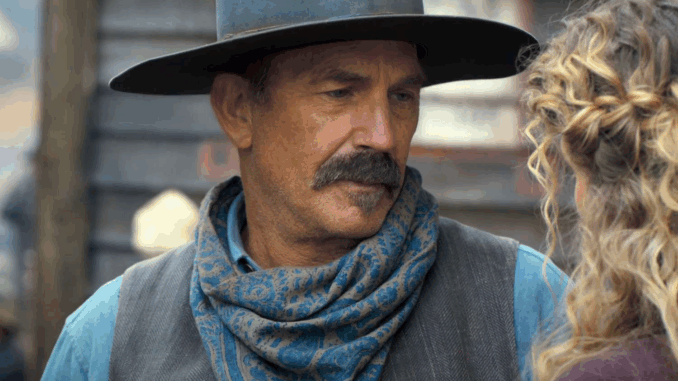
A Titanic Attempt That Nearly Drowned
Thirty years ago, a film splashed into theaters with a tsunami of hype—and an even bigger budget. Waterworld, starring Kevin Costner, promised action, spectacle, and a post-apocalyptic world covered entirely by water. But instead of riding the wave of success, it was immediately branded a flop. So, what actually went wrong?
Let’s take a deep dive into one of the most infamous movies of the ’90s, explore its missteps, and ask—did it really deserve the hate?
The Vision: A Mad Max on Water
A Bold Sci-Fi World
Imagine Earth, but all land is underwater. Humanity survives on rafts and floating fortresses. That was the premise—ambitious, unique, and visually rich.
Costner’s Passion Project
Coming off his Oscar-winning Dances with Wolves, Kevin Costner was Hollywood royalty. He believed in Waterworld so much that he invested his own money and wielded massive creative control. Bold? Yes. Risky? Extremely.
The Budget Tsunami: Why It Cost So Much
An Ocean of Trouble
Filming at sea sounds romantic until the weather turns. Waterworld was shot in the open ocean off the coast of Hawaii. Real waves, real storms, real headaches.
Floating Sets That Sunk (Literally)
One of the main sets, a massive floating atoll, sank during filming and had to be rebuilt. That alone added millions to the budget.
Ballooning Costs
The original budget was around $100 million. By the time the cameras stopped rolling, the final cost hit a staggering $175 million—making it the most expensive film ever made at the time.
Creative Chaos: Ego vs Execution
Costner and the Director Clash
Director Kevin Reynolds and Costner reportedly clashed constantly. Eventually, Reynolds walked off the project, leaving Costner to finish the film himself.
A Script That Kept Changing
Rewrites, reshoots, and indecision plagued the production. When a story lacks direction, no amount of special effects can save it.
The Marketing Misfire: Bad Buzz Before Premiere
The Media Smelled Blood
Months before release, the media dubbed the film “Fishtar” and “Kevin’s Gate”—mocking its bloated budget and predicting failure.
Public Perception Tanked
The bad press stuck. Even moviegoers who might’ve been curious stayed home. It was a case study in how negative buzz can sink a film before it opens.
Box Office Reality: Did It Flop?
Domestic Struggles
In the U.S., Waterworld earned around $88 million—not even covering the budget.
Overseas to the Rescue
Globally, it brought in over $260 million. That helped… but not enough to silence the “flop” label. Especially when you consider the studio likely spent $50–60 million more on marketing.
Critics Were Not Impressed
What They Liked
The visual effects and stunt work were genuinely impressive. The idea? Cool on paper.
What They Hated
Flat characters, clunky dialogue, and pacing that dragged like an anchor. Critics called it soulless and joyless.
The Fans: Divided Then, Curious Now
Initial Reactions Were Cold
Many fans left theaters scratching their heads. Was this supposed to be fun? Deep? Satirical? It didn’t hit the mark in any category.
A Cult Following Emerges
Over time, Waterworld gained fans who appreciated its world-building, costumes, and practical effects. Some even claim the extended “Ulysses Cut” improves the film dramatically.
Behind the Scenes: Nightmares at Sea
Crew Quitting Mid-Shoot
The long days at sea led to tension. Crew members left. Morale sank lower than the sets.
Costner’s Personal Drama
Rumors swirled about Costner’s on-set behavior, creative tantrums, and even luxury accommodations far from the rest of the cast. Fair or not, it painted a tough picture.
The Aftermath: Costner’s Career Took a Hit
After Waterworld, Costner’s star power dimmed for a while. His next film, The Postman, flopped harder. The “auteur” label faded, and so did the blank checks from studios.
Theme Park Redemption
Ironically, the Waterworld live-action show at Universal Studios became one of the most popular attractions. It’s still running today in multiple locations—arguably more successful than the movie itself.
Re-Evaluating the Film Today
Not as Bad as You Remember?
Watch Waterworld now and you might be surprised. The visuals hold up. The action scenes are solid. It’s just… messy.
A Cautionary Tale
Hollywood learned a lot from Waterworld—mostly about managing budgets, egos, and the danger of open-water filming.
30 Years Later: What’s the Verdict?
Was Waterworld a disaster? Financially, not as bad as people think. Creatively, yes—it fell short. But over time, it has morphed into a weirdly beloved misfire. A flawed but fascinating piece of film history.
Conclusion: The Flop That Floated Back
Thirty years ago, Waterworld was supposed to be the next big thing. Instead, it became a lesson in Hollywood hubris. But here’s the twist: it’s still being talked about. Watched. Debated. And even celebrated.
Maybe, just maybe, that’s the ultimate success.
FAQs
1. Did Waterworld actually lose money?
Not exactly. It underperformed in theaters but made up losses over time through international sales, home video, and TV rights.
2. Why did they film on real water instead of using tanks?
The director and Costner wanted realism, but that choice created endless delays and budget issues.
3. Is there a better version of Waterworld?
Yes—the extended “Ulysses Cut” adds important context and makes the story more coherent.
4. Is Waterworld considered a cult classic now?
Absolutely. Many fans appreciate its ambition and practical effects, even if the story is flawed.
5. Will there ever be a Waterworld reboot?
There have been rumors, but nothing official. With today’s technology and tighter scripts, it could work.
